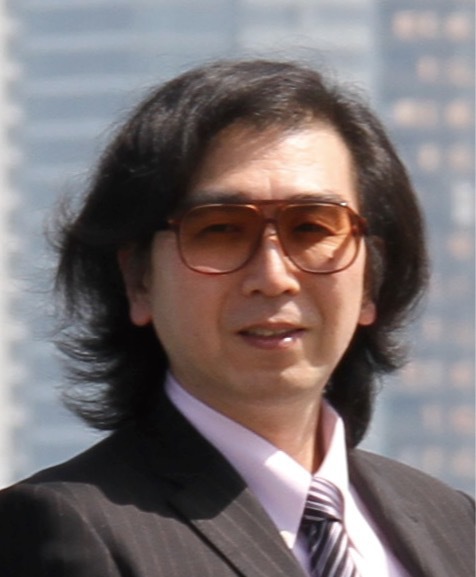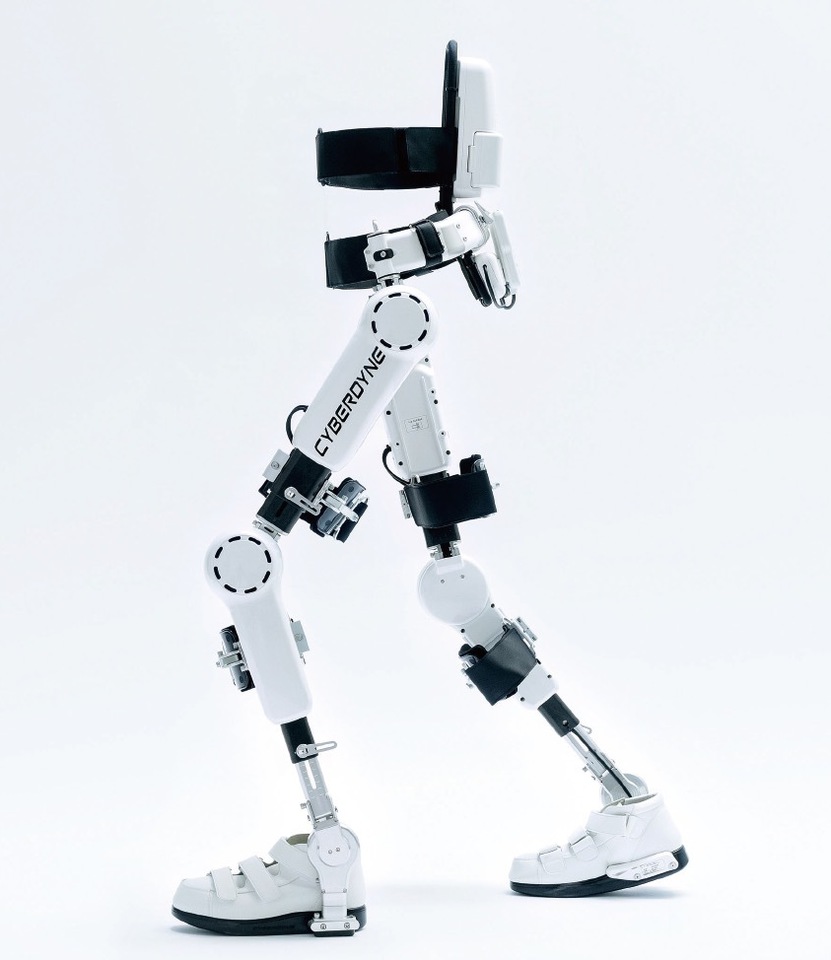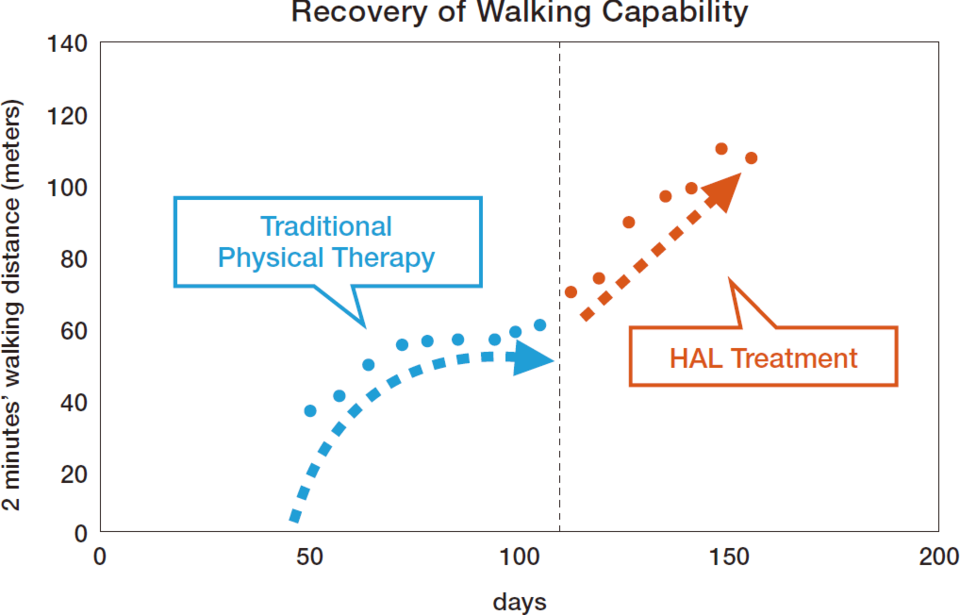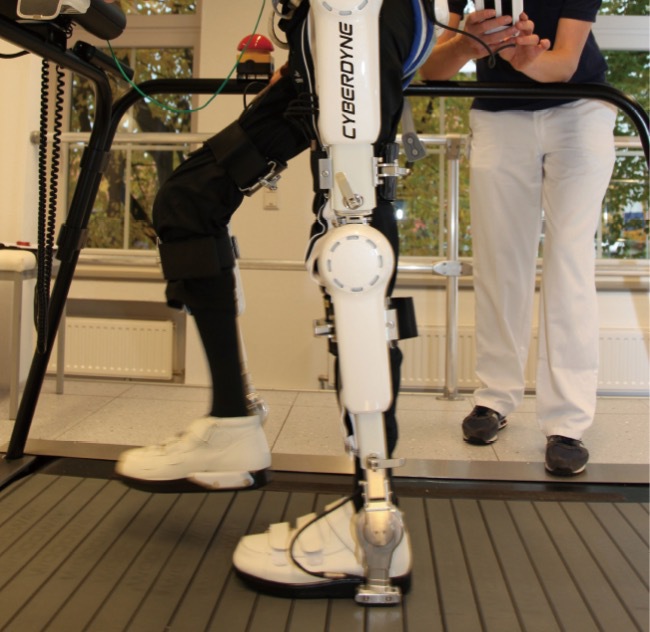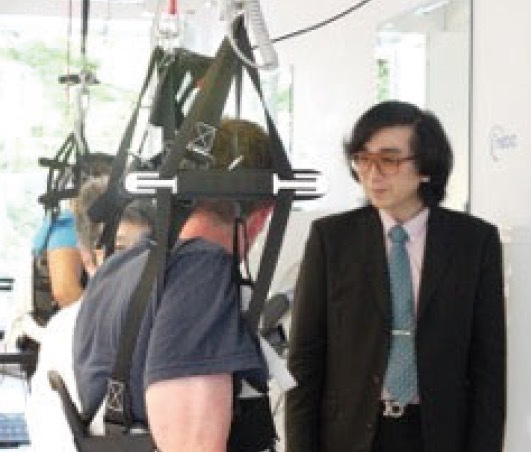Think “I want to walk,” and your legs start moving naturally. This and all the movements we make are based on directions from the brain. Neural impulses, which are commands from the brain, are transmitted via the nervous system to muscles. And as they are transmitted, faint bio-electrical signals leak out to the skin. A wearable robot has been developed that catches these signals through sensors placed on the skin, processes them rapidly, and assists the wearer’s movements. The developer, Dr. Yoshiyuki Sankai, has for many years led the academic field of “Cybernics,” which is a fusion of human, machine, and information systems. The most notable fruit of the research in this field is Robot Suit HAL (Hybrid Assistive Limb®), the world’s first cyborg-type robot, which improves, supports, and regenerates people’s physical and brain-nerve functions.
HAL provides treatment for patients’ physical functions and assists the activities of people with disabilities. HAL for lumbar support can help movements like lifting up heavy objects. The prime feature of this device is that it catches the wearer’s motion intention as bio-electrical signals and achieves the desired movement. Not only that, but the sense of having moved is fed back to the brain as a signal through the body’s own sensory system. Through repetition of this process, using HAL makes it possible for the wearer to facilitate synaptic connections and to relearn how to move the body properly even without HAL.
HAL is now available in various forms, including a medical model for neuro-rehabilitation treatment, an independence-support model for physical training, a caregiving-support model, and a labor-support model.
HAL also offers great promise in helping resolve the social problem presented by the rapid rise in the numbers of people requiring care as the result of aging populations in developed countries. The medical model can enhance people’s physical functioning, allowing them to live more independently, while the caregiving-support model can lessen the burden on caregivers and promises to help keep them from quitting their jobs. In other words, HAL can be expected to allow people to lead healthy lives while lowering society’s economic costs overall.
Dr. Sankai declares, “Through utilizing Cybernics, we aim to achieve a society of ZERO intensive nursing-care™ and a world where people can lead healthier lives.”
HAL has been certified throughout the EU for use as a medical device, becoming the first robotic therapeutic device in the world, and in Germany, treatment using medical HAL is now covered under public workers’ compensation insurance. An application for medical device approval has been processed in the United States, and a decision is expected in 2015. As Dr. Sankai explains, “If HAL is introduced into homes, people will be able to receive the same sort of high-level support provided by medical facilities while living at home. I believe we will see the realization of a situation where humans, technology, and society support each other in this way.” This is the future that is approaching thanks to Dr. Sankai’s Cybernics.
Yoshiyuki Sankai
Professor, Graduate School of Systems & Information Engineering, and Director, Center for Cybernics Research, University of Tsukuba, and Program Manager of the Impulsing Paradigm Change through Disruptive Technologies (ImPACT) Program, initiated by the Council for Science, Technology and Innovation of the Cabinet Office, Japan. After earning his Ph.D in engineering from the University of Tsukuba in 1987, he served there as an associate professor and as a professor of the Institute of Engineering Mechanics and Systems; he also served as a visiting professor at Baylor College of Medicine in Houston, Texas. Member of the Global Agenda Council on Robotics & Smart Devices, World Economic Forum. CEO of Cyberdyne Inc., which he established in 2004 to realize social implementation of Cybernics technologies.
A graph showing the degree of recovery of ambulatory function using traditional physical therapy and using HAL (beginning at the dotted line). It is apparent that treatment with HAL results in a much higher degree of recovery over a shorter period.
Prof. Sankai, University of Tsukuba / Cyberdyne Inc.
Medical HAL (for lower limbs): HAL picks up bio-electrical signals from the brain, such as “I want to walk” or “I want to stand,” as they are transmitted via the spinal cord to muscles and moves together with the wearer’s legs. It is now covered throughout the EU under its Medical Devices Directives, having been certified as a conforming device by one of Europe’s top third-party certification organizations.
Prof. Sankai, University of Tsukuba / Cyberdyne Inc.
HAL is now in full-scale use in Europe, particularly Germany, as a device for medical treatment. The fruits of research in the field of “Cybernics” have brought smiles to the faces of patients and many others, and it promises to change both medical care and people’s social lives for the better.































































































































